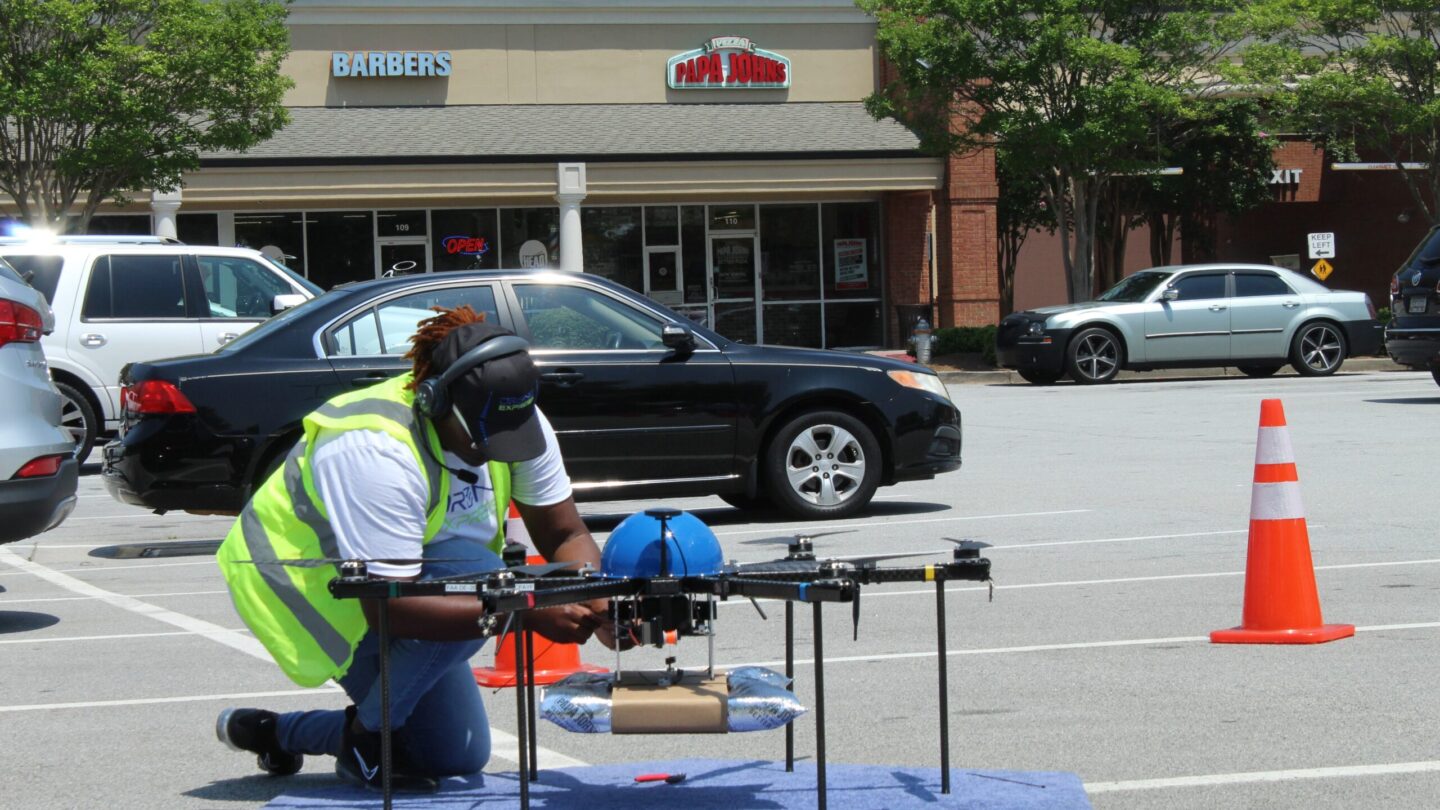Delivering pizza and people: Experiments with autonomous technology in metro Atlanta

It’s high noon at a shopping center in Powder Springs and a part of the parking lot is blocked off.
A crew of four operators, wearing bright yellow safety vests and talking on headsets, get ready to deliver lunch using a drone. A large pizza box wrapped in foil is secured to the device and a few seconds later, the propeller blades start spinning and it lifts the drone into the air.
“If you are within a mile radius of this store during times we have the program on, you’ll actually be prompted for drone delivery,” said Kevin Carfa, vice president of digital for Papa John’s.
This pilot program promises a pizza delivered to your house in 15 minutes, so long as you live within range.
“Ultimately, how can we get pizza to the customer as fast as possible?” Carfa asked. “So we started looking at what are the solutions and said, you know what, this looks like a great pilot to launch for us.”
A shortage of workers has many companies turning to technology as an alternative way to move goods and people.
Papa Johns’ partner in this experiment is Drone Express, a company based out of Dayton, Ohio.
“You can’t even come up and pick up the pizza as fast as we’re gonna get it to you, so this is built for pizza,” said CEO Beth Flippo. The company has been in the drone business since 2019, and began discussions with Papa John’s about pizza delivery a year ago.
“The biggest thing that we had to do was develop a winch that would slowly lower the pizza to the ground,” she said. “And that took the most effort from us. It works flawlessly, it can carry a lot of weight on it, but that was one of the biggest challenges was to make sure that this winch lowered it perfectly level every time.”
She says because we’re still in the early stages of drone delivery, there’s a lot of human supervision involved. The law also requires them to keep the drones within their line of sight.
But eventually, these drones will be doing most of this work on their own using artificial intelligence.
“When you look at a drone you think there’s a lot of moving parts, it’s a mechanical system. We view it as an intelligence system, and how it communicates with the world around it,” said Flippo. “So it’s just a different way of attacking this type of air travel.”
And she says, it’s not just food delivery that will be relying on drone delivery in the coming years.
“We’ve had a lot of construction companies show interest. Lots of construction sites shut down for small items,” she said. “And auto parts. How many of us have been stuck by the side of the road or there’s an accident and people can’t get through? Just getting someone a fire extinguisher can save lives.”
Self-driving shuttles
In Peachtree Corners, the Curiosity Lab has helped the community develop a reputation as a “living laboratory” for technology.
So it’s no surprise that some of the first self-driving people-movers in Georgia are here.
The fleet of small, autonomous shuttles which run along Technology Parkway in Peachtree Corners is the product of a tech start-up based in Orlando called Beep.
The company’s chief technology officer is Clayton Tino, a Georgia Tech grad. Beep has deployed its autonomous shuttles in more than a dozen locations across the country. But Tino says no two locations are alike.
“In Peachtree Corners, as an example, we’ll take a LiDAR device, we’ll drive it along the route we tend to operate and build a really high-resolution 3D map,” said Tino. “We’ll then bake in some semantics in terms of how we expect other roadway users or potentially pedestrians, as an example, to behave within that environment to give the shuttle some context.
“From there it’s a process of really building a route that we expect it to operate on,” he said.
He says the next step is increasing the speed of the shuttles while maintaining safety, and expanding their reach to other areas of metro Atlanta and beyond.
Tino says those external factors make autonomy on the roads much more challenging than operating in the air.
“The nice thing about air space is that it’s heavily constrained and structured,” said Tino. “As I’m sure you’ve experienced driving in the city of Atlanta, structure is not a word I would use to describe anything happening on the roadway.”
For more on this story, check out this episode of WABE Tech Cast.







